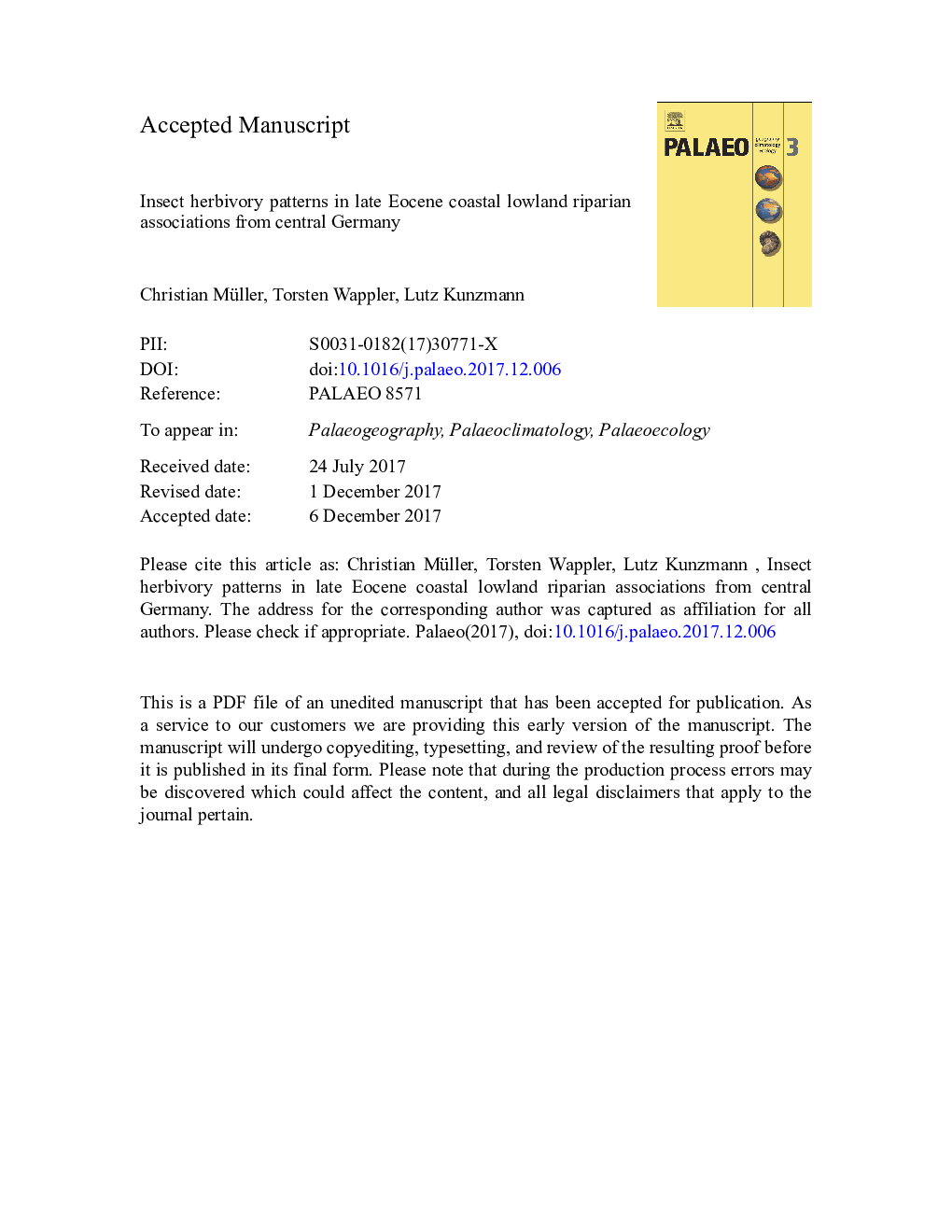| Article ID | Journal | Published Year | Pages | File Type |
|---|---|---|---|---|
| 8868421 | Palaeogeography, Palaeoclimatology, Palaeoecology | 2018 | 57 Pages |
Abstract
The study comprises a first detailed analysis of insect herbivory patterns in a Paleogene megaflora from the central German Leipzig Embayment (former WeiÃelster Basin). The compression plant assemblage comes from the upper Eocene (upper Bartonian or lower Priabonian) Luckenau Clay Complex (lignite-bearing Borna Formation) that represents sediments of a coastal alluvial braidplain. In total 26 insect damage types (DT's) were distinguished on 1588 fossil leaves resulting in a damage frequency of 6.1%. Overall 18 of 36 dicotyledonous angiosperm taxa provided evidence for an associated insect herbivore fauna. Particular statements about insect folivory are restricted to evergreen taxa, which provided a sufficient number of leaves. The overall highest diversity and frequency of DT's was detected on Sloanea nimrodi (Elaeocarpaceae). Based on the abundance and distribution of functional feeding groups (FFG's) the diversity of insects herbivores as well as specific host plant characteristics such as plant defense strategies and leaf morphology are discussed. Hence, the study provides key information on the ecology of feeding associations and the linkage between plants and their insect herbivores for a lowland riparian forest ecosystem. Furthermore, the investigation of the “kaolinite-enriched” Luckenau Clay Complex yields important insights in syn- and postdepositional processes and landscape evolution.
Related Topics
Physical Sciences and Engineering
Earth and Planetary Sciences
Earth-Surface Processes
Authors
Christian Müller, Torsten Wappler, Lutz Kunzmann,
